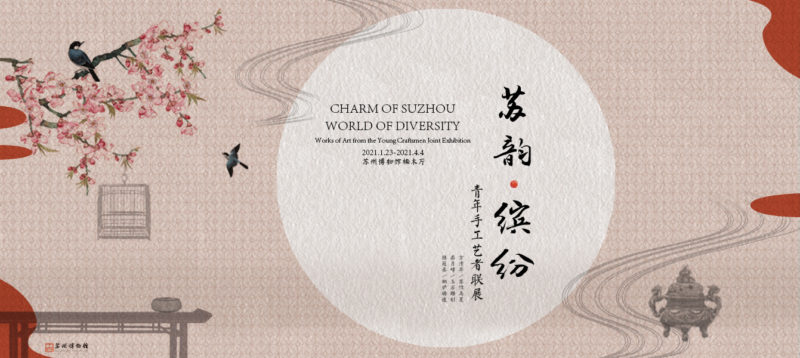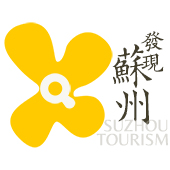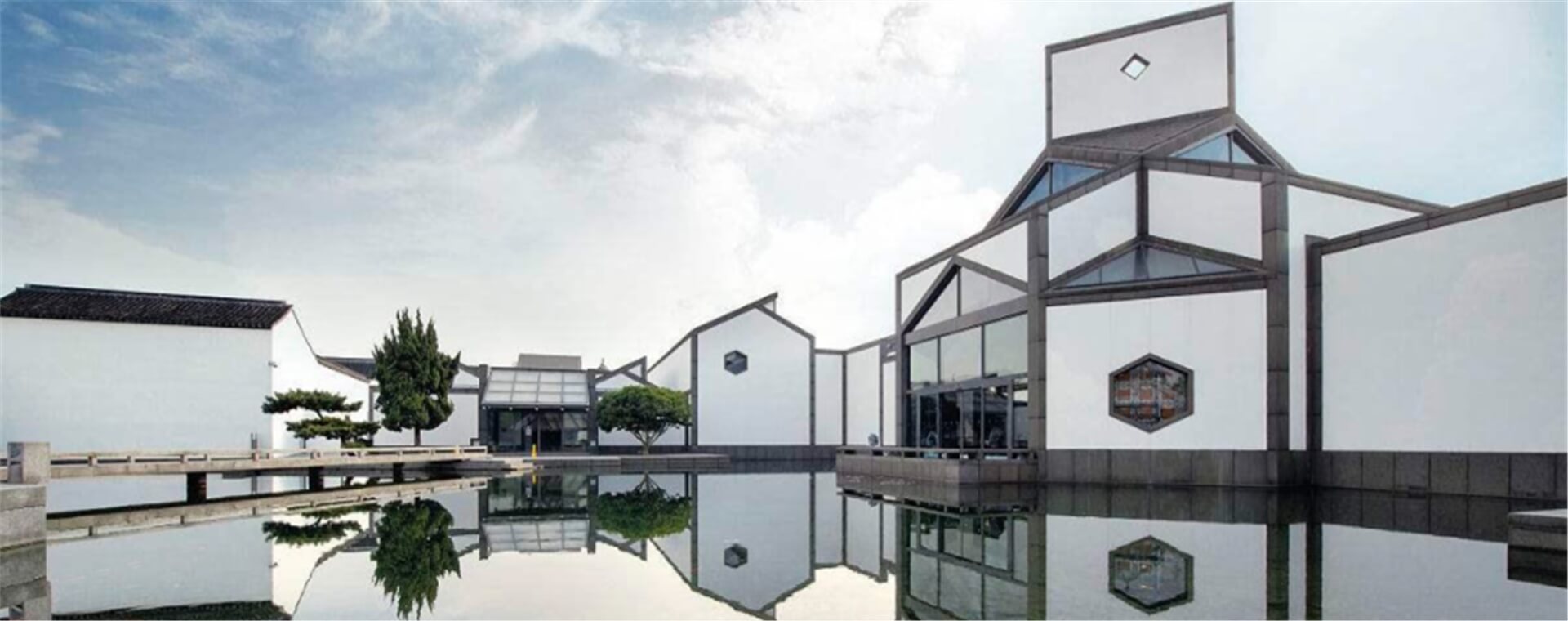
Exhibition time: January 23, 2021 (Saturday) – April 04, 2021 (Sunday)
Exhibition venue: Nanmu hall, Suzhou Museum
Preface
As the old saying goes, “All the wise have a quick mind, which leads to fun. There is no fun in the world that doesn’t come from wisdom.” Therefore, the ultimate beauty of craft lies in wisdom.
Among the diverse cultures, folk craft is the most direct and conspicuous way to reflect local culture. Suzhou handicraft has always been thought highly of for its delicacy and elegance. It could be dated back to Qin dynasty (ca. the 3rd century B.C.) when famous sword makers Ganjiang and Moye appeared in Suzhou. Ever since Wei, Jin and the Southern and Northern dynasties (from the 3rd century C.E. to the 6th century C.E.), handicraft prospered to a large extent, especially after several times of people’s migration to south. It came to prime in the Ming and Qing dynasties (from the 17th century C.E. to the late 19th century). Every piece of handicraft reflects the skill and painstaking effort of the craftsman, as well as the extensive and profound culture of the time.

With the rapid development of global urbanization and industrialization nowadays, business environment closely associated with traditional handicraft is fading away, which results in dual test coming from internal heritance and external impact. It is the responsibility of the museum to revitalize traditional handicraft by heritance and innovation of youth craftsmen, to make it part of our life and promote innovation.
Craftsmen should believe that nothing has not gone through thunderstorm and every cloud has a silver lining.
Craftsmen ought to know that the world keeps changing and new ideas come one after another.
This exhibition is tailor-made for the first three winners, i.e. Fang Qinghua, Ru Yuefeng and Chen Guancheng, of the first Suzhou Youth Handicraft Exhibition and Competition held in 2019. The Suzhou style bird cages, carved jades and incense burners showcased in this exhibition not only reveal skills of the young craftsmen and charm of Suzhou handicraft, but also reflect Suzhou local culture and craftsmen’s wisdom that has been passed from generation to generation.

Chen Ruijin,Director of Suzhou Museum
About exhibition
Suzhou bird cage, jade carving and copper furnace casting are jointly displayed in Suzhou Museum. They not only show the skills of young craftsmen and reflect the contemporary style of Suzhou crafts, but also show the local culture of Suzhou, making the audience feel the wisdom handed down from generation to generation by Suzhou folk artists for thousands of years.

Craftsmen
Fang Qinghua
Born in November 1973. Suzhou arts and Crafts Master, Suzhou arts and crafts artist, Suzhou folk craftsman, member of Suzhou arts and Crafts Society, member of Suzhou Artists Association, member of Suzhou Wuzhong District Youth Association, member of Suzhou bamboo carving Association, graduated from Suzhou Institute of Arts and crafts.

In 1992, he studied with Yan Hujin, the “Nanlong champion” in Suzhou, and has been engaged in the production industry of Suzhou birdcage for nearly 30 years. He has mastered various traditional techniques of making Su Pai birdcage, including selecting materials, cutting materials, drawing, carving, drilling, stringing, drawing, frying, threading, inlaying, etc. Among them, the core production techniques, such as bingmeiding and Wanzi Huiwen carving, have been handy. As one of the leaders of Nanlong cage making industry, Fang Qinghua has also developed its own brand “Qinghua” and “Qingyifang” Suzhou style birdcage. Su Pai’s birdcage making skills have been interviewed and reported by Gusu evening news, Suzhou daily, Jiangsu public news channel, Shanghai Daily, Suzhou Institute of Arts and crafts, and the “learning power” learning platform of the Propaganda Department of the CPC Central Committee.
Ru Yuefeng
Senior arts and crafts artist, master of Suzhou arts and crafts, master of Chinese jade carving, director of Suzhou jade carving industry association, Suzhou folk craftsman. He has been engaged in jade carving for more than 20 years since 1992. He specializes in thin tire utensils. He has a good reputation of “thin tire a Si”. He has made a lot of achievements in tackling difficult problems such as modeling style, decorative pattern, Zhang Tiao Dao technique of thin tire utensils. He made great efforts, devoted himself to special research, daring to explore and innovate, and boldly presented the ink taste of traditional Chinese painting on the thin vessel through the precise control of the thickness of the jade body.

The thick vessel was splashed with thick ink, and the thin vessel was covered with light ink. At the same time, the transition between thick and light was natural and appropriate. Only in this way could the vast ink charm and artistic conception be glowed. Thus formed a unique personal style of “ink painting thin fetal vessels.”.
Chen Guanchen
He is the son of Chen Qiaosheng, the master of Chinese copper furnace, the inheritor of Chen’s copper furnace and its making skills, the Deputy Secretary General of Suzhou Museum Association, the curator of Suzhou qiaoshenglu Museum, the member of China collectors association, the first batch of outstanding youth of Zijin cultural creativity in Jiangsu Province, the new “three belt” of local talents in Jiangsu Province, the member of Xiangcheng District CPPCC, and the “bronze lost wax casting” of Xiangcheng District intangible cultural heritage The representative inheritor of “manufacturing skills” founded “national traditional technology innovation demonstration base – craft Jiangnan stove Culture Workshop”.

Following his father, Chen Guancheng systematically studied the manufacturing techniques of copper stove since childhood. On the basis of inheriting the lost wax casting techniques of ancient bronze, and combining with his own unique modern aesthetic cultivation, he has created a number of works with high art collection value, such as “lion ear extravagant mouth square fumigation stove”, “boundless longevity fumigation stove” and “pine tree frame hanging fumigation stove” in recent years, and has won many awards. After years of trial and exploration, Chen Guancheng restored the long lost “Dahongpao” skin color making technique of Xuande stove, and applied it to restore the Ming and Qing palace bronze stove, which was widely praised by the industry.
The 11th Panchen Lama encouraged Chen Guancheng to continuously develop and innovate contemporary copper furnace art. He wrote “Guan Cheng Gong Zao” in his own handwriting. In praise. Master Tubudan, presided over by Yonghe temple in Beijing, master yanjue, presided over by Guangji temple in Beijing, President of China Buddhist Association, master Yinshun, vice president of China Buddhist Association, master Mingxue, vice president of China Buddhist Association, and Taoist priest Li Guangfu, President of China Taoist Association, all collect Guancheng copper stoves.
Representative works include Xuanlong Furnace Road, Qiao Sheng Shuo Lu, Xuan long Wencui and Qiao Sheng Lu culture appreciation.

